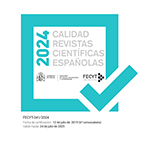Neostandard o substandard? Criteri metodologici di orientamento per la didattica
Resumen
In questo articolo si propone una riflessione su come determinare i confini della varietà standard della lingua italiana e sulle implicazioni che ciò ha sull’insegnamento della lingua, in particolare come L2/LS. Il divario esistente tra l’italiano codificato nelle grammatiche e l’italiano utilizzato dai parlanti nativi ha fatto sorgere per chi insegna l’italiano, da un lato, la necessità di fare riferimento ad una norma, e, dall’altro, la difficoltà di come stabilirla, date le numerose fasi di cambiamento e di riassestamento della norma linguistica attraverso i secoli e le diverse posizioni adottate dagli studiosi circa i fenomeni linguistici da considerarsi parte del nuovo standard. Questa ricerca si inserisce nell’ambito di questa riflessione. Sulla base dei principali studi condotti sul neostandard e di due precedenti studi dell’autrice del presente contributo, in questo articolo si propone un riesame dei tratti dell’italiano dell’uso medio di Sabatini (1990a) alla luce della loro frequenza (in accordo con Sobrero 1992) in un corpus di lingua italiana, e di due criteri, ossia, la funzionalità e l’accettabilità sociale. Questi ultimi permettono di distinguere quali tratti dell’italiano dell’uso medio siano parte del neostandard e quali del substandard. Incrociando i tre parametri sopra menzionati, sarà possibile verificare innanzitutto se i tratti linguistici più frequenti ricadano nella categoria dello standard, neostandard o substandard; in secondo luogo, sarà possibile catalogarli come insegnabili come parte dello standard o neostandard o menzionabili come variante substandard, fornendo così uno strumento di orientamento a chi insegna l’italiano.
Descargas
Descarga artículo
Licencia
La revista Cuadernos de Filología Italiana, para fomentar el intercambio global del conocimiento, facilita el acceso sin restricciones a sus contenidos desde el momento de su publicación en la presente edición electrónica, y por eso es una revista de acceso abierto. Los originales publicados en esta revista son propiedad de la Universidad Complutense de Madrid y es obligatorio citar su procedencia en cualquier reproducción total o parcial. Todos los contenidos se distribuyen bajo una licencia de uso y distribución Creative Commons Reconocimiento 4.0 (CC BY 4.0). Esta circunstancia ha de hacerse constar expresamente de esta forma cuando sea necesario. Puede consultar la versión informativa y el texto legal de la licencia.










